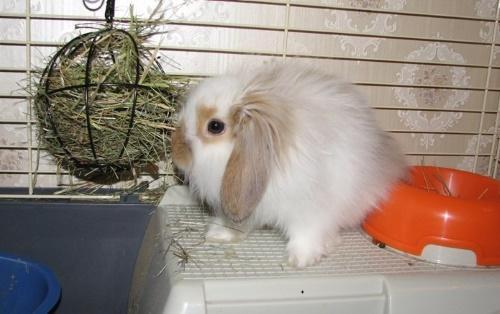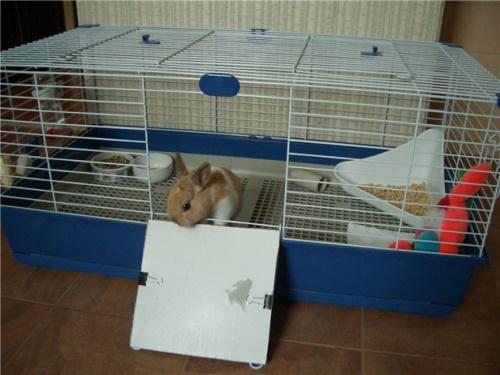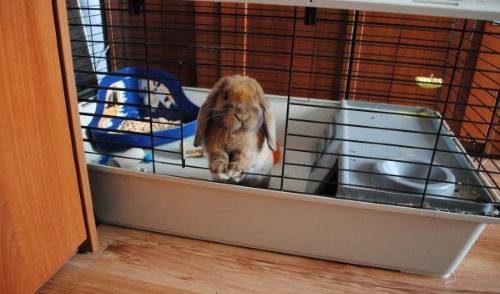How to care for decorative rabbits - basic rules
 Recently, as pets, you can increasingly see unusual, both for the house, animals. For example, instead of cats, they keep small and beautiful rabbits. Their small size is quite suitable for an apartment, and life in a cage is just what you need at home. However, in order for pets to feel good, it is important to know how to care for decorative rabbits. It's not enough just to equip them with a cage house. It should be cleaned regularly, otherwise the animal will get sick. It is also important to choose the right diet, provide leisure time and think about possible breeding. But let's talk about everything in order.
Recently, as pets, you can increasingly see unusual, both for the house, animals. For example, instead of cats, they keep small and beautiful rabbits. Their small size is quite suitable for an apartment, and life in a cage is just what you need at home. However, in order for pets to feel good, it is important to know how to care for decorative rabbits. It's not enough just to equip them with a cage house. It should be cleaned regularly, otherwise the animal will get sick. It is also important to choose the right diet, provide leisure time and think about possible breeding. But let's talk about everything in order.
How to care for decorative rabbits - cage selection

It should be spacious enough, because the rabbit will not only spend the night there. He must have the ability and space to stretch his legs. On average, the house should be 4 times larger than the animal (for medium-sized breeds, 1 m is enough).
The cage must be equipped with the following devices:
- Drinking bowl for water - better drip, attached to the side wall.
- Cereal feeder - hanging or heavy ceramic to prevent the rabbit from turning it over.
- Manger for hay.
- Separate litter box.
- If necessary - a house for a rabbit with rabbits.
- A special mineral stone or wooden sticks so that the eared one can grind the incisors.
You also need to take care of the leisure of the rabbits by placing toys (rattles balls, ordinary cardboard boxes). But this does not negate the walks. You can release your pet in the apartment, carefully following it, or take it out on a leash outside.
Keeping the cage clean
 It is better to put the cage for rabbits a little on a dais, in a cozy and bright place with a comfortable temperature. It should not exceed 20 ° C, otherwise the animals will be hot. You should also exclude drafts and do not place pets near the TV - they are afraid of loud sounds. The bottom of the cage should be lined with bedding, sawdust or straw. It is advisable to change it once a week, and even more often if necessary. You need to pour wood shavings into the toilet and change it to fresh every 2-3 days. If the litter box is dirty, the rabbit will equip itself with a litter box somewhere else, right on the litter. You also need to regularly add fresh water to the drinking bowl, remove wool and food residues after feeding.
It is better to put the cage for rabbits a little on a dais, in a cozy and bright place with a comfortable temperature. It should not exceed 20 ° C, otherwise the animals will be hot. You should also exclude drafts and do not place pets near the TV - they are afraid of loud sounds. The bottom of the cage should be lined with bedding, sawdust or straw. It is advisable to change it once a week, and even more often if necessary. You need to pour wood shavings into the toilet and change it to fresh every 2-3 days. If the litter box is dirty, the rabbit will equip itself with a litter box somewhere else, right on the litter. You also need to regularly add fresh water to the drinking bowl, remove wool and food residues after feeding.
Instead of "chemistry" for cleaning the cell, it is better to use a solution of potassium permanganate.
What to feed rabbits
 Although all eared people love cabbage, it is better to refuse it so that the rabbit does not have a swollen stomach and diarrhea. For good nutrition, the diet of rabbits should include:
Although all eared people love cabbage, it is better to refuse it so that the rabbit does not have a swollen stomach and diarrhea. For good nutrition, the diet of rabbits should include:
- dry granulated feed;
- hay (meadow, alfalfa);
- twigs of fruit trees, conifers;
- from 4 months you can give some vegetables and fruits (carrots, cucumbers, apples).
Do not feed rabbits with citrus fruits, sweets or dairy products.
Vaccination and sterilization of domestic rabbits
 Like rabbits that are bred for meat, decorative rabbits are also often sick. To protect them, it is imperative to have regular vaccinations. This is best done at a veterinary clinic. At least 3 times a year, rabbits should also be given anthelmintic drugs, even if they do not walk outside.
Like rabbits that are bred for meat, decorative rabbits are also often sick. To protect them, it is imperative to have regular vaccinations. This is best done at a veterinary clinic. At least 3 times a year, rabbits should also be given anthelmintic drugs, even if they do not walk outside.
To maintain health, it is equally important to maintain the cleanliness of the animals themselves. To do this, they need to be combed out every day, periodically wipe their eyes and ears, and cut their nails every 2 months. But it is not worth bathing unnecessarily - the rabbits lick themselves.
If the question is not planned breeding, animals at a young age should be neutered / castrated. Without this, when puberty approaches, they will become aggressive. They will begin to mark the territory and go to the toilet everywhere, actively dig the floor in the cage and gnaw everything.